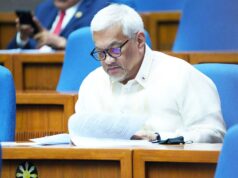State-run Development Bank of the Philippines (DBP) is working with the Department of Transportation (DOTr) and the Land Transportation Franchising and Regulatory Board(LTFRB) in coming up with financial interventions to help the transportation sector get back on track after reeling from the ill-effects of the pandemic, a top official said.
DBP President and Chief Executive Officer Emmanuel G. Herbosa said the assistance includes government subsidies to public utility vehicle (PUV) operators to cover revenue gaps during the period when a temporary ban on PUVs were imposed as part of community lockdowns.
“DBP is one with the DOTr and LTFRB in finding suitable and sustainable solutions to assist the transport sector as it steadily begins to recover from the devastating losses spawned by this pandemic,” Herbosa said.
DBP is the seventh largest bank in the country in terms of assets and provides credit support to four strategic sectors of the economy – infrastructure and logistics, micro, small and medium enterprises (MSMEs), social services and community development, and the environment.
The bank’s assistance to the transport sector would be implemented through its Rehabilitation Support on Severe Events (RESPONSE) program, which extends financing support for the rehabilitation efforts of both public and private firms adversely affected by calamities such as the latest national public health emergency.
As of end-June, DBP has provided a total of P19.16–billion in credit assistance and payment deferment under DBP RESPONSE, which benefitted 606 clients of which 19 clients are from the transport sector.
Herbosa said DBP recognizes the essential role of the transport sector in the country’s economic recovery as it caters mostly to workers belonging to the MSME sector,which is considered the backbone of the local economy.
He said industry stakeholders should collaborate and muster the needed resources to implement innovative approaches and adapt to new regulations to ensure the health and safety of commuters.
“This an opportune time for the public transport sector to examine its future role in the country’s mass transportation system while optimizing available resources to meet the growing demand for cleaner and more efficient modes of transport,” Herbosa said.





